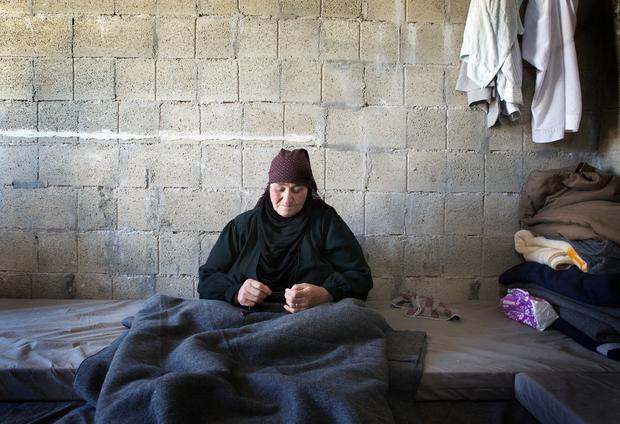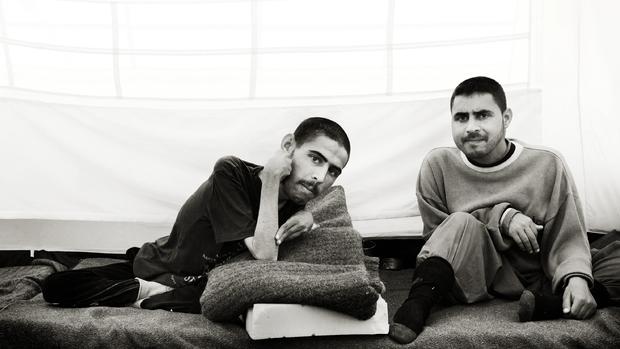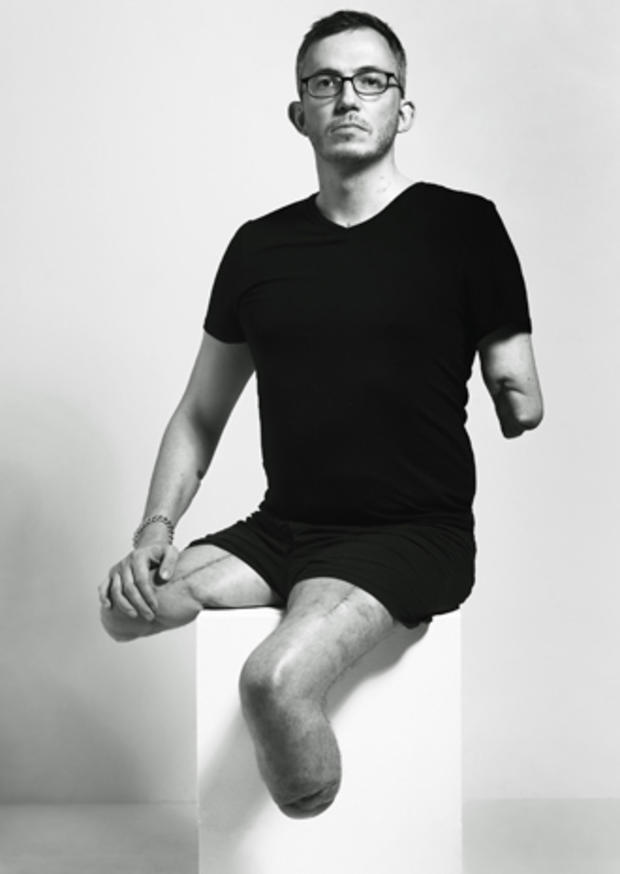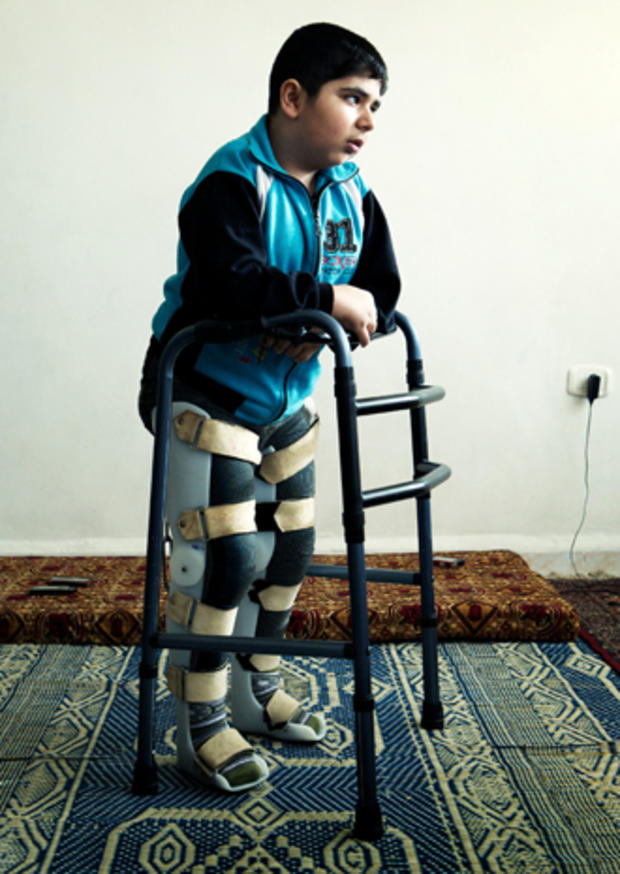Photographer and triple-amputee Giles Duley meets Syria refugees trapped by their injuries
LONDON At least 175,000 men, women and children from war-ravaged Syria have found refuge in the relative safety of the Zaatari refugee camp, just several miles from the border inside neighboring Jordan.
Bullets and shells from the raging two-year civil war don't reach the camp, but life at Zaatari is harsh. Every day, more refugees arrive and strain the camp's limited space and resources.
Many refugees struggle to escape Syria and reach the camp with serious injuries from the war. Others have preexisting disabilities.
British freelance photographer Giles Duley spent two weeks meeting and taking pictures of refugees who are double-cursed -- not only forced to flee home and country, but in some cases, trapped by their injuries in their new surroundings.
- Assad says Syria could stand up to Israel
- Watch: Obama admin giving up on regime change in Syria?
- Obama: No "easy answers" on Syria
Hamdah, 70, told Duley she was hiding in a cellar when the Syrian Army searched her house. They found her and her family, dragged them out for questioning, and in the melee Hamdah was pushed over and shattered her hip. Two of her sons are still being held by the regime, as far as she knows.
She fled to Jordan for treatment and ended up at Zaatari. Her hip has been treated, but she still can't walk, and on the rocky, muddy terrain of a refugee camp, a wheelchair is useless to her. She rarely leaves her tent.
Sawsan, 40, lost her husband to the war. Then, during a protest on her road she was shot in the leg and, after months of treatment, it was amputated above the knee. Now she too is stuck in a tent at Zaatari, worried about how to care for her 10 children.
Duley says journalists often struggle to gain the trust of people in such vulnerable positions, which can make it hard to get at their stories. He's different.
In 2011, embedded with U.S. troops in Afghanistan, Duley stepped on an IED.
"There was no sound that I remember. I just remember what I'd describe as a very bright white heat which enveloped my whole body, and a sense of weightlessness," he told CBSNews.com during an interview in London, just more than two years after the blast.
If it wasn't for his body armor and helmet, he would almost certainly have been killed on the spot, but he never even lost consciousness.
He did lose his left arm, his left leg below the knee, and his right leg above the knee. His right hand was crushed when he landed on it and had to be rebuilt with dozens of small steel plates to hold the shattered bones in place.
"I think there's something in the fact that someone looks at me and things 'This guy has gone through something similar, this guy has experienced something that I have.'"
Even before he learned to walk on his prosthetic legs, Duley taught himself how to work a camera with just one hand.
"Two days after the blast, I was in and out of consciousness, and the first person I saw was my sister, and the only words I said to her were, 'I am still a photographer.' It was always, for me, about getting back to who I was, and my identity was so wrapped up in being a photographer."
Not long after he learned to walk, Duley confronted his fears head-on: he returned to Afghanistan to take pictures of civilians who had suffered injuries similar to his own. It was a nerve-wracking experience, riddled with panic attacks and paranoid car rides. He spent one night "sweating buckets" underneath his bed, convinced a car was about to blow up outside his window.
On that trip, and about a year later on his trip to the Zaatari refugee camp, Duley -- who is physically lacking so much -- began to appreciate even more what he still had.
He received the best medical care Britain has to offer, the support of family and friends, and was able to return to the profession he loved.
"I've become closer to the subject," explains Duley. "The things I was saying hadn't changed, but my voice had got a lot louder because of the attention I was receiving, because of what happened to me, so it felt in many ways like a duty to carry on with my work."
The refugees' stories put Duley's own challenges in perspective. Even though their injuries were often far less severe, their prospects for recovery -- physical and mental -- were grim.
Bashar was 12 when shrapnel tore through his leg. He lives now in a rented apartment in Jordan, and he's getting treatment thanks to the charity Handicap International, which helped Giles organize his trip. But Bashar's apartment is on the 5th floor, and there's no elevator.
"He can't see friends, he can't go out and play, he can't do music anymore and he can't go to school, and that's really all he wants," says Duley of the young boy, "He was virtually a prisoner of this apartment, because it was impossible for him to get outside."
Giles Duley is living, walking proof of the power of the human spirit to overcome even the most daunting obstacles.
With his pictures of the refugees, he hopes to show that for thousands of victims of Syria's civil war -- including many civilians and many children -- there is hope, against the odds, but there's not nearly enough help.
"I'm not sure whether one side should be backed or not," the photographer says of the highly politicized war. "Everyone talks about the red line being crossed with chemical weapons, but in the middle of that are civilian, everyday people who are caught up in it, and we seem to have forgotten them to a certain extent."




